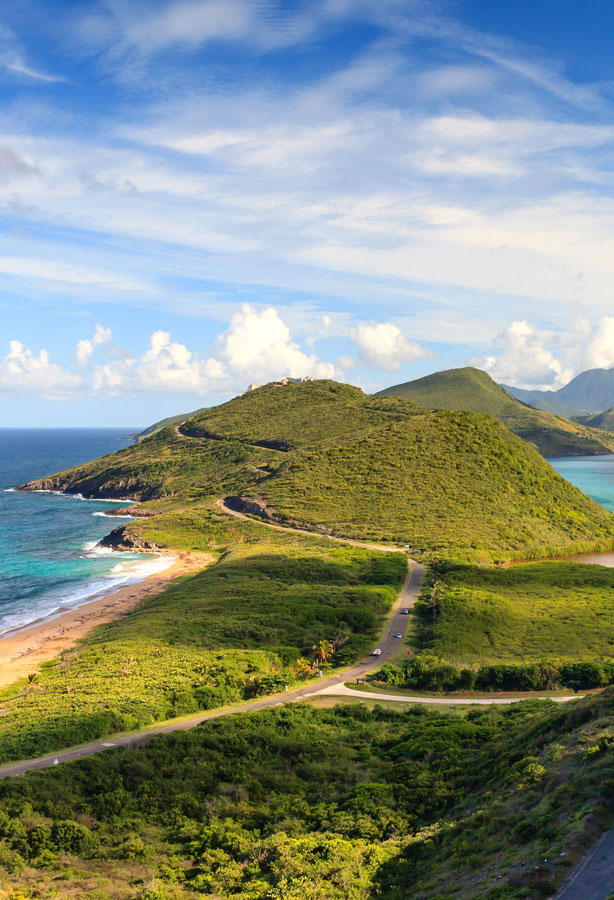The world’s smallest countries are easy to miss when you look at a map. In fact, some are so small that they could fit entirely within New York City’s Central Park — with room to spare. But for what these bite-sized countries lack in size they more than make up for in culture and history. Here’s a look at the 12 smallest countries in the world based on geographical size.
12. St. Vincent and the Grenadines

St. Vincent and the Grenadines covers a mere 150 square miles of area in the Caribbean Sea — which is only about twice the size of Washington, D.C. The country comprises St. Vincent island — measuring 18 miles long by 11 miles wide at its largest points — and the northern Grenadine Islands. While there are about 600 total islands in the archipelago, the country of St. Vincent and the Grenadines only contains 32 of its smaller islands and cays. In 1979, St. Vincent and the Grenadines voted to free itself from British rule, becoming the last of the Windward Islands (a group that also includes the countries of Dominica and St. Lucia) to achieve independence.
11. Grenada

Also located in the Caribbean Sea, about 100 miles north of Venezuela, Grenada covers 133 square miles of total land area. The island nation measures 21 miles long by 12 miles wide and forms the shape of an oval. Grenada achieved independence from the U.K. in 1974, though its head of state remains King Charles III and its official language is still English. Other languages spoken in Grenada include Grenadian Creole English and Grenadian Creole French — reflecting the rich and storied history of the African, European, and Indigenous peoples who have called Grenada home throughout history.
10. Malta
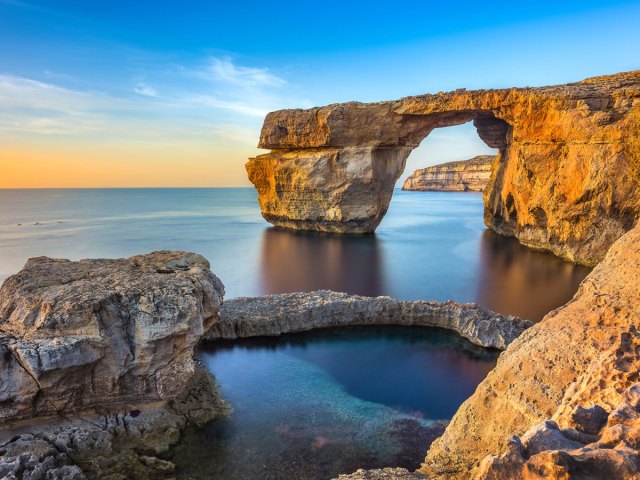
The Mediterranean island nation of Malta covers 122 square miles and sits 58 miles off the southern coast of Sicily and 180 miles north of Africa. There are five islands that make up the country: the inhabited islands of Malta, Gozo, and Comino, plus the uninhabited islets of Kemmunett and Filfla. Prior to gaining independence from the U.K. in 1964, Malta played a key role supporting the Allied Forces during World War II. This tiny country was home to an important military base that proved to be a strategic location throughout the conflict. The British awarded the Maltese the George Cross in 1942 for their wartime contributions.
9. The Maldives
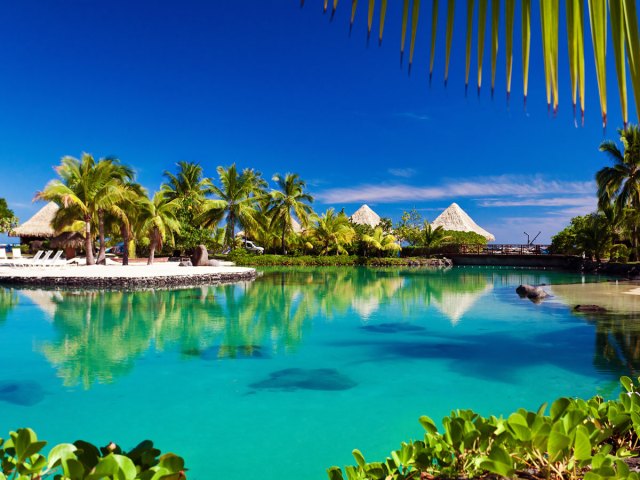
A bucket-list destination for many travelers, the Maldives consist of 1,200 tiny islands and sandbanks scattered around the Indian Ocean, combining to encompass 115 square miles of area. These islands — of which only some 200 are inhabited — extend 510 miles from north to south and around 80 miles from east to west. There are no gigantic mountains nor towering hills anywhere in the nation, as the Republic of Maldives is the world’s flattest country. On average, the coral beaches rise a mere four feet above sea level. The highest natural point in the Maldives — an unmarked spot on Addu Atoll — reaches only eight feet above sea level.
8. St. Kitts and Nevis
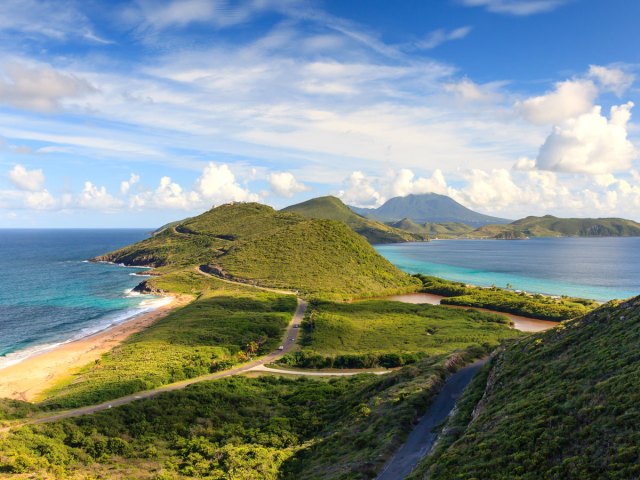
The smallest country in the Caribbean Sea, 104-square-mile St. Kitts and Nevis is formed by two distinct islands. St. Kitts is the larger of those islands, measuring 23 miles long and five miles wide. Nevis is located two miles southeast and is made up almost entirely of its namesake Nevis Peak, which reaches 3,232 feet above sea level. Founding Father Alexander Hamilton was born in Nevis sometime between 1755 and 1757, at a time when it was a British territory. Hamilton lived there until moving to America in 1764.
7. Marshall Islands
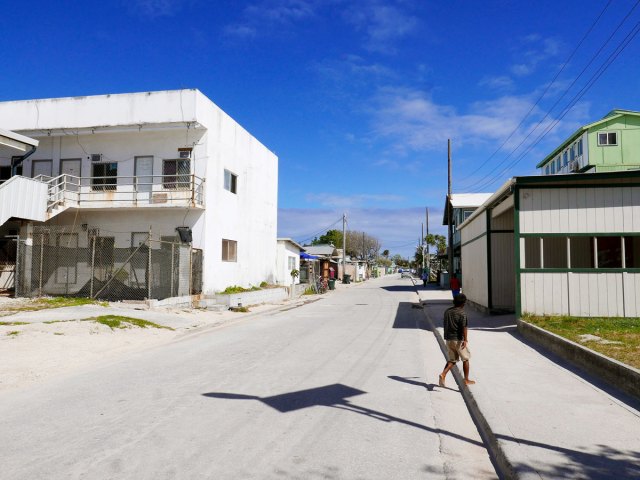
Known by the name Majōl in the local Marshallese language, the Marshall Islands are made up of 1,200 islands and islets covering around 70 square miles of land. Incredibly, these islands are spread out over 180,000 square miles in the central Pacific Ocean. The islands form two parallel coral atolls that lie 125 miles apart. The largest of the country’s many atolls, Kwajalein, is just six square miles in area. The Marshall Islands are home to the infamous Bikini Atoll, which was the site of 23 nuclear bomb tests between 1946 and 1958 by the U.S. government. It also lent its name to the bikini bathing suit.
6. Liechtenstein

Covering an area of roughly 62 square miles, the European microstate of Liechtenstein borders Switzerland to the west and Austria to the east. Liechtenstein is the only country in the world with 100% of its territory located in the Alpine region. The country broke away from the Holy Roman Empire in 1866 and has maintained a neutral stance ever since, even remaining unaligned during World Wars I and II. One of Europe’s least-visited countries, Liechtenstein is one of the few world countries without an airport — you’ll need to fly into nearby Zurich, Switzerland, and take a train to visit.
5. San Marino
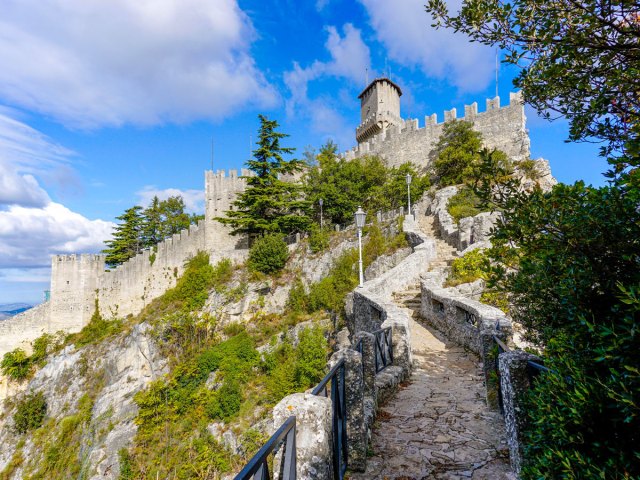
San Marino is one of two countries landlocked entirely within Italy (the other being Vatican City). This 24-square-mile country is the fifth-smallest nation in the world, and also the world’s oldest extant republic. San Marino was founded on September 3, 301, though it wasn’t until 1978 that the nation’s Declaration of Citizen Rights was formally recognized. The city of San Marino contains a trio of medieval fortresses known as the “Three Towers of San Marino.” These impressive fortifications were built in the 11th century and are now a popular tourist attraction.
4. Tuvalu
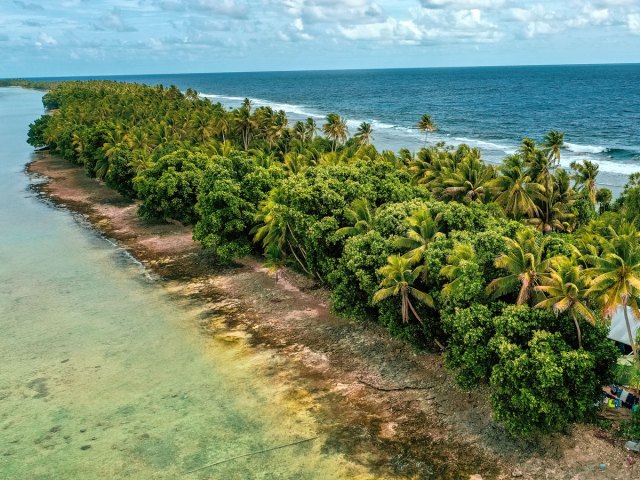
Tuvalu is composed of nine small islands that form a 420-mile-long chain across the South Pacific Ocean. Despite its substantial breadth, Tuvalu covers only 10 square miles of area and has just 14.9 miles of coastline. Prior to achieving independence in 1978, Tuvalu was a British colony known as the British Gilbert and Ellice Islands. Today, the country relies on an unusual export as one its major revenue sources: internet suffixes. In 1998, Tuvalu licensed the rights to its .tv country suffix, which is now used by many television companies and streaming services.
3. Nauru
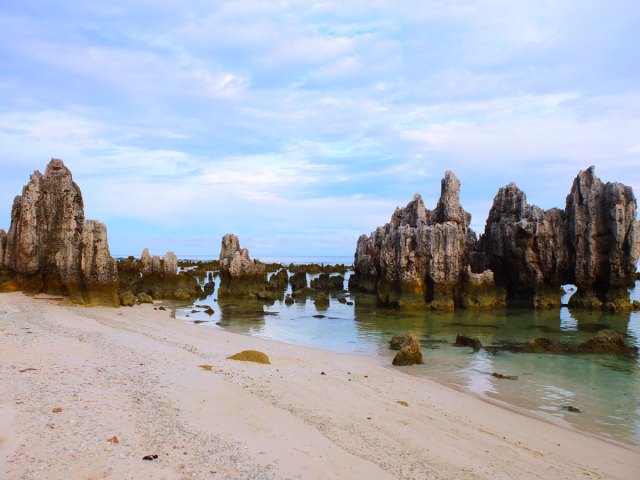
Nauru is the world’s smallest island nation. This central Pacific sovereign state — which encompasses a mere 8.1 square miles of area — has no army, no rivers, and no protected regions. But it does have a history dating back several millennia, as Nauru is believed to have been first inhabited by Micronesian and Polynesian settlers around 1000 BCE. British captain John Fearn became the first European to arrive in Nauru in 1798, and the country later achieved independence in 1968. During the 1980s, Nauru boasted the highest GDP of any sovereign nation, making it among the wealthiest countries in the world for a time.
2. Monaco
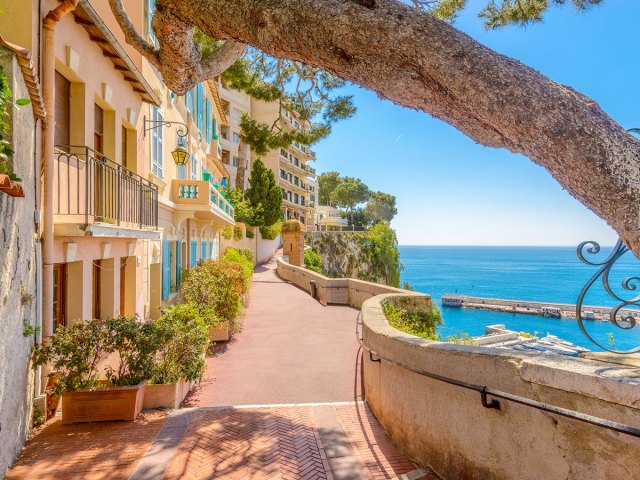
Nestled between Italy and France along the French Riviera, Monaco is a European microstate covering a total area of 0.77 square miles — smaller than New York City’s Central Park. It also has the shortest coastline of any country on Earth, at just 2.5 miles in length. Despite its diminutive size, Monaco is home to around 40,000 residents, making it the most densely populated sovereign nation in the world. Since the 1860s, Monaco has been home to a thriving casino industry, though local residents are strictly prohibited from gambling — a rule that’s been in place since the mid-1800s. In exchange, those residents are exempt from paying income tax.
1. Vatican City

The world’s smallest sovereign state is Vatican City, which is entirely landlocked within Rome, Italy. Covering just 0.17 square miles, the Vatican serves as the global headquarters of the Catholic Church and the residence of the Pope. The country achieved independence from Italy in 1929. Of course, Vatican City’s cultural history dates back long before then. It is home to stunning Renaissance-style architecture and renowned artistic works. One of the more recognizable landmarks is St. Peter’s Basilica, a gorgeous, domed structure that was completed in 1615. Vatican City also contains the Sistine Chapel, which was built in 1470 and features paintings such as Michaelangelo’s The Creation of Adam.
More from our network
Daily Passport is part of Inbox Studio, which publishes content that uplifts, informs, and inspires.






